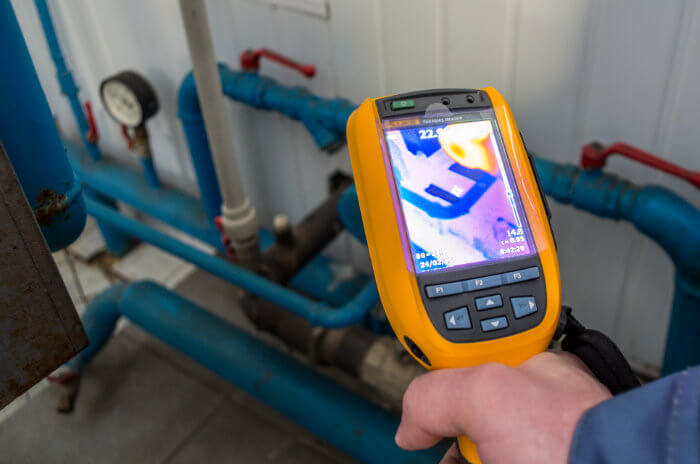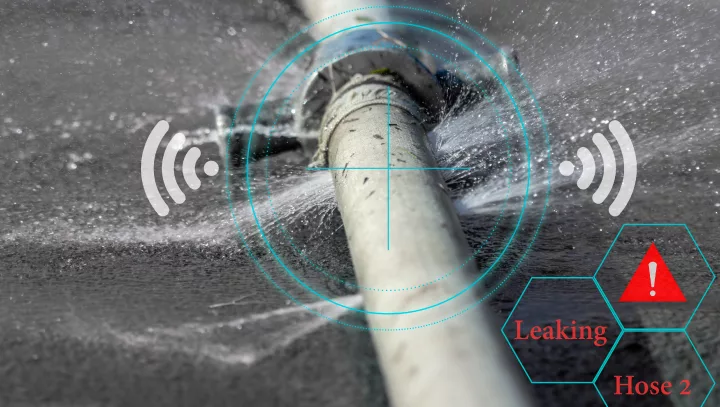Ingenious Solutions for Very Early Discovery of Water Leaks in Structures and Facilities
As the integrity of buildings and framework is vital, the challenge of very early detection of water leakages has actually spurred cutting-edge services that promise to reinvent the way we safeguard versus possible problems. From sophisticated leak discovery technologies to the deployment of IoT sensors for real-time monitoring, the landscape of leakage prevention is progressing swiftly. Device understanding formulas provide a peek right into the future of leakage prediction, while thermal imaging presents a non-intrusive technique for pinpointing surprise leaks. Automated water flow evaluation systems are improving how leaks are determined and resolved, paving the method for an aggressive approach to water leak detection. Each of these options holds the vital to guaranteeing the dependability and long life of our built environment, triggering a shift towards an extra lasting and reliable future.
Advanced Leak Detection Technologies
Advanced leak detection technologies, equipped with advanced sensors and formulas, play an essential role in swiftly identifying and pinpointing water leaks in numerous setups. These innovations employ a combination of acoustic, thermal, and electro-magnetic picking up approaches to identify leakages precisely. Acoustic sensors spot the sound of running away water, enabling accurate localization of the leak source. Thermal imaging detects temperature changes created by water leakage, providing an additional effective approach for leak recognition. Electromagnetic sensing units can identify modifications in magnetic fields brought on by water, providing yet another layer of leakage detection capability.

IoT Sensors for Real-Time Monitoring
In the world of contemporary water leakage detection, the integration of IoT sensors for real-time tracking stands for a pivotal advancement in boosting aggressive leak detection capabilities. These sensors provide constant tracking of water supply, offering real-time information on water circulation rates, stress variants, and temperature modifications. By leveraging IoT modern technology, these sensing units can find also the tiniest abnormalities in water use patterns, allowing very early identification of prospective leakages prior to they rise right into significant concerns.
IoT sensing units transfer information to a centralized system, where advanced algorithms analyze the details and create signals or alerts when abnormalities are identified. This real-time monitoring capacity enables property proprietors or center managers to promptly address leaks, minimizing water damage, reducing repair costs, and conserving water sources.
Moreover, IoT sensing units can be incorporated with structure management systems, enabling automatic reactions to spotted leaks, such as shutting off water shutoffs or triggering pumps to reduce the influence of leaks. Overall, the execution of IoT sensors for real-time tracking considerably boosts the effectiveness and effectiveness of water leakage detection in structures and infrastructure.
Equipment Learning Algorithms for Leakage Prediction

One key benefit of utilizing device learning for leakage prediction is its ability to constantly find out and boost its accuracy with time. As even more data is accumulated and fed into the algorithm, it can Visit Your URL refine its forecasts and adapt to transforming conditions, inevitably enhancing the dependability of leak discovery systems.
Furthermore, machine discovering algorithms can assist in identifying refined signs of leaks that might go unnoticed by standard monitoring techniques. water leak detection. By analyzing complicated information This Site embed in real-time, these algorithms can give early cautions and signals, permitting punctual intervention and preventative maintenance to alleviate potential water damages and associated expenses
Making Use Of Thermal Imaging for Leak Detection
Thermal imaging technology provides an appealing technique for discovering water leaks in different systems and frameworks. By making use of infrared radiation and temperature level variances, thermal imaging cameras can identify surprise leakages that are not conveniently noticeable to the nude eye.
Among the crucial advantages of thermal imaging for leak detection is its non-intrusive nature. Unlike typical methods that might call for getting into walls or floors to situate leakages, thermal imaging enables for non-destructive testing. This not only conserves time and lowers costs but also minimizes disturbance to the structure or facilities being evaluated. Additionally, thermal imaging can quickly check huge areas, providing a comprehensive review of possible leakage resources in a timely manner. On the whole, making use of thermal imaging innovation enhances the performance and accuracy of water leak detection, making it a valuable device for preserving the integrity of structures and facilities.
Automated Water Circulation Analysis Equipments
Exactly how can automated water Recommended Reading circulation analysis systems reinvent the detection and administration of leaks in numerous systems and infrastructures? Automated water flow analysis systems offer a proactive strategy to leak detection by constantly keeping track of water circulation rates and patterns. By establishing standard information, these systems can rapidly recognize variances that might indicate a leakage, making it possible for prompt treatment to avoid substantial damages.
These systems utilize sophisticated formulas to analyze real-time data and give immediate signals when anomalies are detected, permitting quick activity to be taken. Additionally, automated water circulation evaluation systems can be incorporated with structure management systems or IoT platforms, improving general performance and making it possible for remote monitoring capabilities.
Additionally, the data accumulated by these systems can be utilized for predictive maintenance functions, aiding to identify possible weak factors in the infrastructure before leakages occur. Overall, the application of automatic water circulation analysis systems can substantially enhance leakage detection and administration methods, eventually leading to set you back savings, decreased water wastefulness, and increased sustainability in buildings and framework.

Final Thought
In conclusion, the combination of advanced leak detection innovations, IoT sensors, maker learning algorithms, thermal imaging, and automated water flow evaluation systems offers cutting-edge options for early detection of water leakages in buildings and framework. These technologies enable real-time monitoring, prediction of leakages, and reliable detection methods to stop water damages and wastefulness. Applying these options can help in maintaining the stability and sustainability of water systems in different setups.